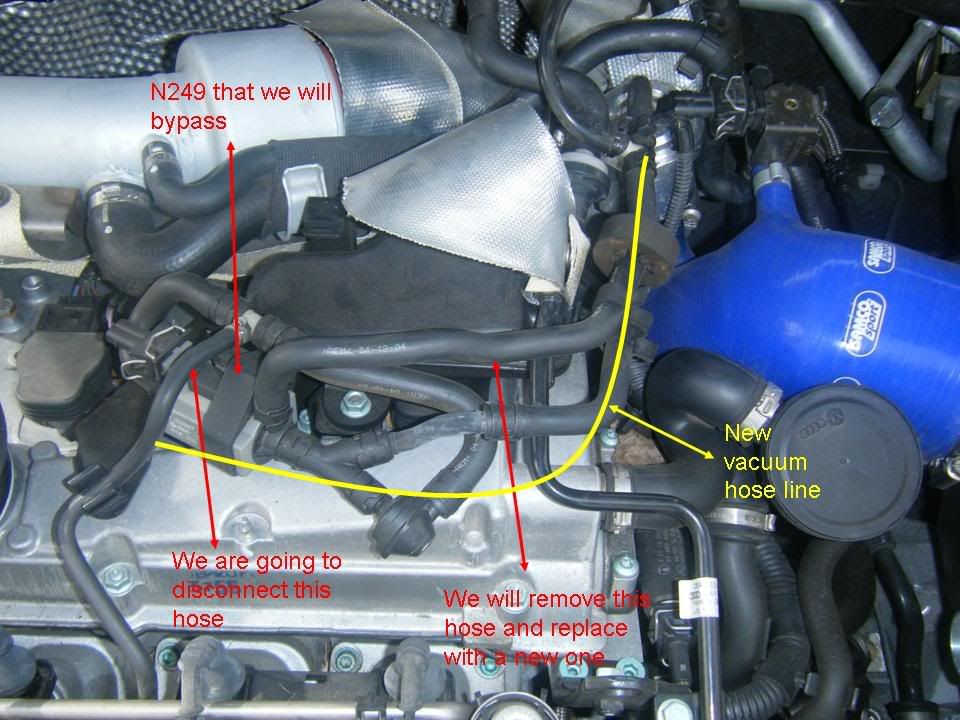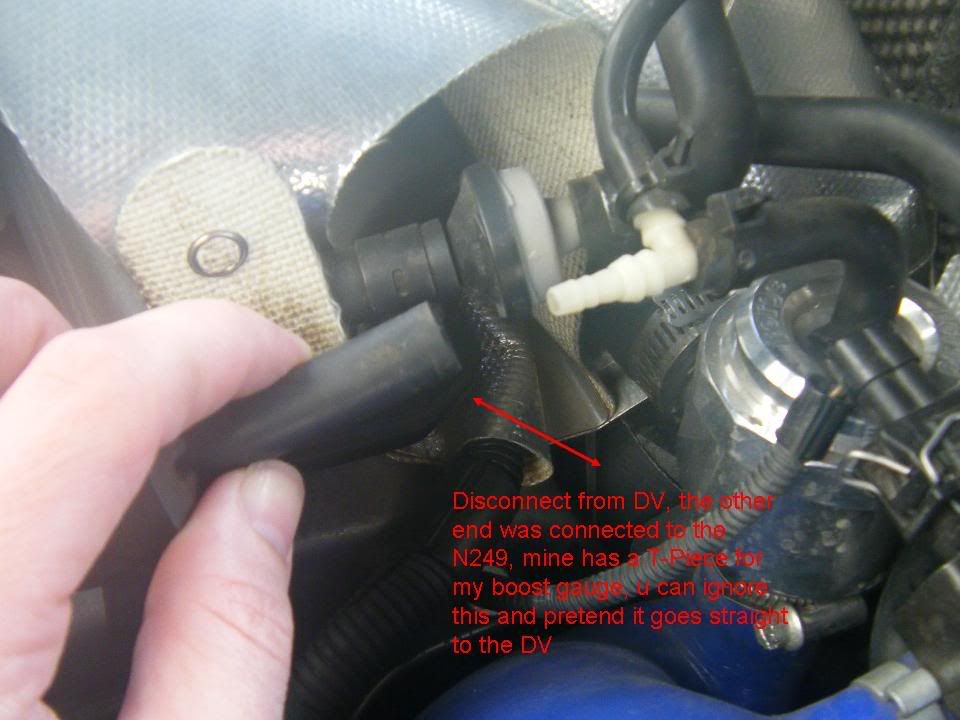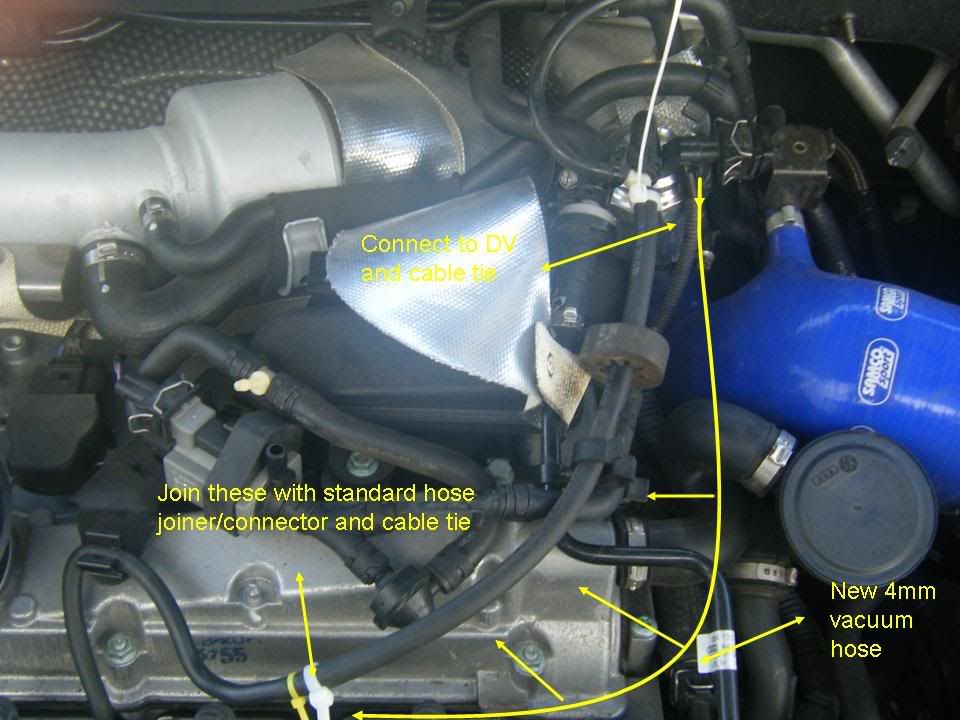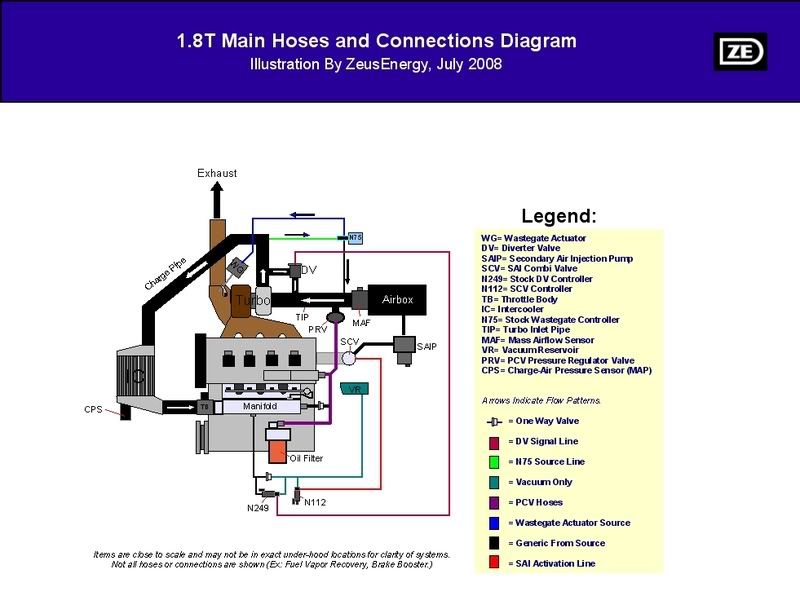Ladies and Gentlemen,
I did the below quick guide to bypassing the N249 value, there may be other ways but i think this is the easiest, i created this guide for vagdrivers.net but as there are still requests on here so i decided to post it over here too..
I already posted my graphs showing my boost curve from before and after this mod, so it is well worth while IMO, in addition I notice the Dump reaction is quicker and throttle response has some improvement, you also get some more chatter when you let off the throttle.
Before after graphs http://www.seatcupra.net/forums/showthread.php?t=215185&highlight=n249
Proceed at your own risk!
Tools needed.
4mm silicon vacuum hose, i used fuel line hose as it is more commonly available
5mm hose connector * 1, ( I used 5mm copper pipe as it is stronger)
Long nose pillars
Cable ties
20 min of free time.
Step 1
Example of hose locations and hoses to be removed, also you can see in yellow where the new hose will go.

Step 2
Remove the 2 hoses pointed out in the diagram from the N249, the clips are stubborn so you will probably have to break them.

Step 3
Remove other end of the hose from the Diverter value, as below, the hose from the N249 to the DV is totally removed now, store this in a safe place in case you need it in the future.

Step 4
We will now join the new piece of 4mm hose from the DV straight to the hose we disconnected from the N249, cable tie it and cut excess cable to clean it up a bit.
That’s it your done.

Do not block off the hose connectors that your removed, some people have tried it and had negative performance as a result
I did the below quick guide to bypassing the N249 value, there may be other ways but i think this is the easiest, i created this guide for vagdrivers.net but as there are still requests on here so i decided to post it over here too..
I already posted my graphs showing my boost curve from before and after this mod, so it is well worth while IMO, in addition I notice the Dump reaction is quicker and throttle response has some improvement, you also get some more chatter when you let off the throttle.
Before after graphs http://www.seatcupra.net/forums/showthread.php?t=215185&highlight=n249
Proceed at your own risk!
Tools needed.
4mm silicon vacuum hose, i used fuel line hose as it is more commonly available
5mm hose connector * 1, ( I used 5mm copper pipe as it is stronger)
Long nose pillars
Cable ties
20 min of free time.
Step 1
Example of hose locations and hoses to be removed, also you can see in yellow where the new hose will go.

Step 2
Remove the 2 hoses pointed out in the diagram from the N249, the clips are stubborn so you will probably have to break them.

Step 3
Remove other end of the hose from the Diverter value, as below, the hose from the N249 to the DV is totally removed now, store this in a safe place in case you need it in the future.

Step 4
We will now join the new piece of 4mm hose from the DV straight to the hose we disconnected from the N249, cable tie it and cut excess cable to clean it up a bit.
That’s it your done.

Do not block off the hose connectors that your removed, some people have tried it and had negative performance as a result



